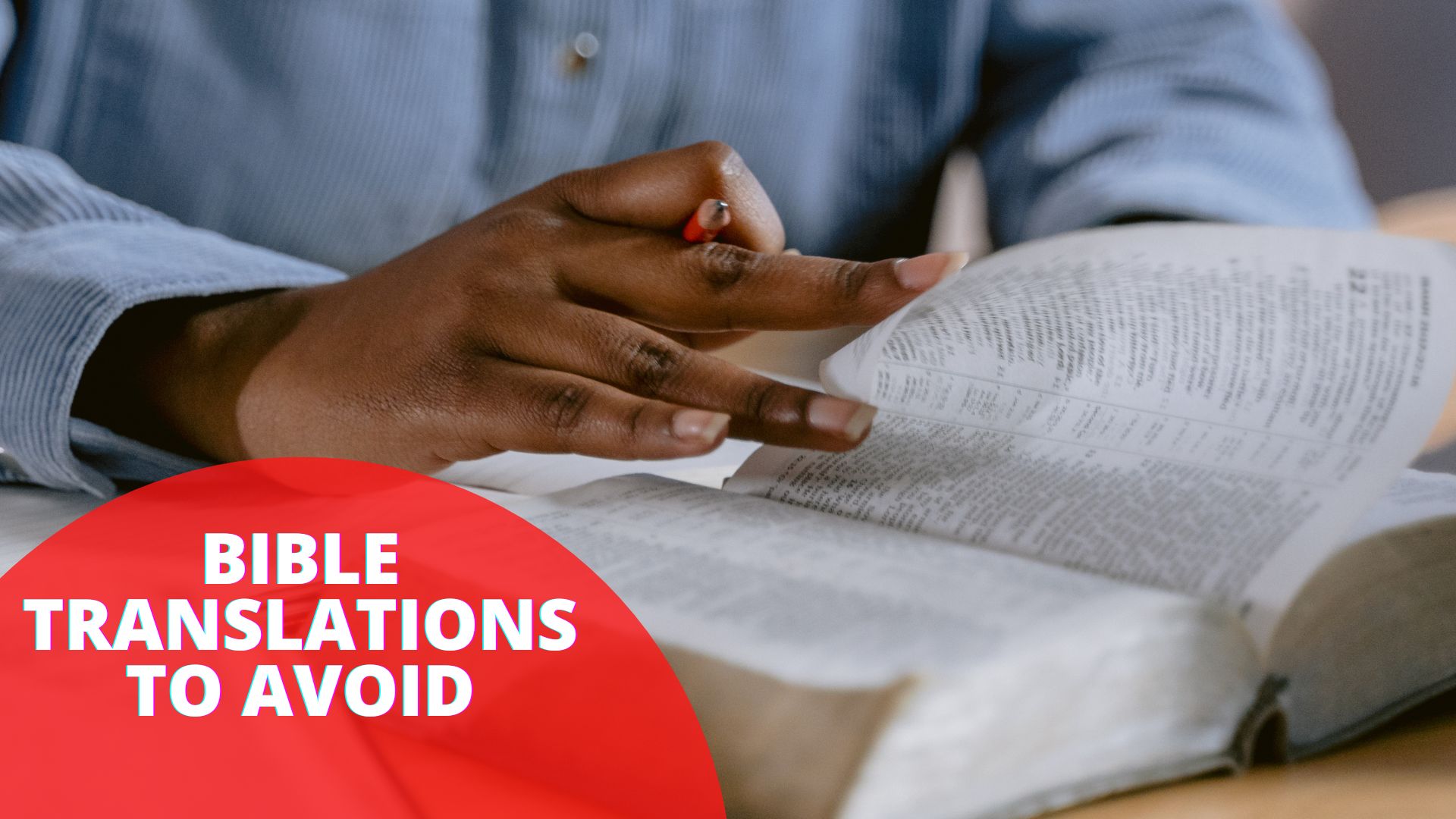The Best Bible Translation for Study can be best categorized as literal, dynamic equivalent, and transliteration. Literal translations are word-for-word translations that try to capture the nuances of a passage in its original form.
The dynamic equivalent is a thought-for-thought translation that tries to convey the message of a passage without being slavishly faithful to every detail. Finally, transliterations are more loosely translated passages that have been written in English for better comprehension. Which one is best for you?
In this blog post, we will explore what each type offers so you can make an informed decision on which Bible translation best suits your needs!
Bible study can be a lifelong pursuit. If you are looking for the best Bible translation to use as you pursue your scripture studies, this article will help guide you in the best direction!
What is a Bible translation, and why do we need them?
Throughout history, the Bible has been translated into several languages. This is essential for evangelism, but each language comes with its challenges. Therefore, when studying the scriptures, you want to have a Bible translation that will allow you to understand God’s word in its original form.
The source languages for most English translations of the Bible are Greek, Hebrew, and Aramaic. However, each language has its challenges that may make translating it into English difficult. The Greek language, for example, is substantially different from English in both word structure and sentence construction. These obstacles can make it challenging to find an accurate translation.
The best way to approach the Bible is to determine what you want from your Study. Knowing this will help guide you in choosing the best Bible translation.
What is the best Bible translation for study purposes?
When choosing the Best Bible Translation for you, there are several things to consider. First, the best Bible translation will allow you to understand God’s word in its original form and convey the message of a passage without being slavishly faithful to every detail. While this may seem cut and dry, many different types of translations can make this a more complicated decision.
We will explore what each type offers so you can make an informed decision on which Bible translation best suits your needs!
Literal: Best for advanced Study and those with a strong foundation in the original languages.
Dynamic Equivalent: Best for those who want clarity and readability without worrying about the details.
Transliteration: Best for those who want to experience the scriptures in a similar way to how they may sound when read aloud in another language (Greek, Hebrew, and Aramaic).
List of Best Bible Translation for Study
You will likely have heard of some of today’s modern Bible translations. Let’s compare four popular ones so you can choose which best suits your translation needs.
There are many different Bible translations, but which one is the best for Study and understanding of the text
1. The King James Version (KJV)
The King James Version (KJV) is a classic translation first published in 1611. It was translated from the Textus Receptus, which can be described as a precursor to the printed text today.
This translation is helpful when studying for its accuracy in translating difficult Hebrew and Greek words into their closest equivalent in English.
The downside of this version is it does not convey messages easily to modern readers. This is due to its style of writing, which is different from our everyday vernacular.
Additionally, this translation was created before the discovery of ancient manuscripts that include chapter and verse divisions (think books and paragraphs), so it does not identify these divisions within scripture.
Finally, some words have changed meaning since this Bible translation was first published, so reading this version may cause the reader to have a misunderstanding.
2. The New King James Version (NKJV)
The NKJV was created in 1982 by eight scholars, most notably Dr. Thomas Nelson, who is recognized as one of the leading Bible translators in America.
This translation is very similar to the KJV, so much so that it uses the KJV as a resource in many places. The NKJV is also thought to be very accurate, but this similarity hampers its readability to the KJV.
3. The New International Version (NIV)
The NIV was created by an international committee of 100 scholars and pastors representing 16 denominations. It was completed in the late 1970s and translated into multiple languages since then.
The NIV is appropriate for Study because it is accurate and easy to read, making its message clear. This Bible also uses very similar language to modern English, so readers will easily understand it without having a “foreign” feel to the text.
4. The English Standard Version (ESV)
The ESV is also appropriate for Study because it is very accurate and easy to read, like the NIV, but is distinct in how it doesn’t use archaic languages like the KJV or NKJV.
Additionally, this translation is thought to be the most literal of any modern translation of the Bible. Those who want a very detailed study will appreciate this aspect, but those who prefer a more dynamic reading will not enjoy it as much.
5. The Holman Christian Standard Bible (HCSB)
The HCSB is a more recent translation, having been published in 1999. It is also very accurate for Study, but it emphasizes being readable within its translation philosophy.
The HCSB has been translated from critical texts and must be read in the same format as the original manuscripts. For this reason, it does not include chapter and verse divisions, which can make reading difficult.
Additionally, this translation is not as widely printed or used, so it may be challenging to find a printed copy.
7. The Contemporary English Version (CEV)
The Contemporary English Version (CEV) translates words into modern-day English rather than old-fashioned or hard-to-understand phrasing from older translations like KJV or ASV.
This translation is apparent and easy to read, making it suitable for first-time Bible readers. However, the CEV does not always render difficult words or phrases accurately, so those who want a more accurate study may not find this version helpful.
Additionally, because of its emphasis on readability and clarity of phrasing, sentence structure can sometimes be awkward and hard to follow.
8. The New Living Translation (NLT)
The New Living Translation (NLT) is a good Bible version for those who prefer a more dynamic reading experience. It conveys the “feelings” of what the text might have meant when originally written.
For this reason, the NLT is often used by preachers and teachers who want to impart or explain what God meant to convey in scripture, but it is not appropriate for Study because it does not always render words accurately.
Best Bible translation for scholars and Bible study.
Literal Translations Best for Advanced Study and Those with a Strong Foundation in the Original Languages.
There are two types of literal translations: formal equivalence and dynamic equivalence. Formal equivalent translations try to convey the word-for-word translation without paraphrasing or adding interpretive words. Dynamic equivalence focuses on capturing the essence of a passage with fresh English.
Examples of the literal translations are the NASB, ESV, KJV, and NKJV.
Formal equivalence
Formal equivalence can be helpful for those who have a strong foundation in the ancient languages and want to understand God’s word in its original form. Scholars or pastors most often use this for their sermon preparation. It helps them accurately convey the meaning of a passage but can make it difficult to read for those without advanced knowledge.
Dynamic equivalence
Dynamic equivalence can be helpful for those who want clarity and readability, but don’t worry about the details. This type of translation is typically practical, so it’s easier to understand. However, while this version takes interpretation into account, it can take away from the intention of the original text without detailed background knowledge.
Dynamic Equivalence Best for Those Who Want Clarity and Readability Without Worrying About the Details.
There are two types of dynamic equivalence: functional equivalent and thought-for-thought. Functional equivalence focuses on the basic idea and is typically used in one-on-one evangelism situations. thought-for-thought translation tries to convey the literal meaning, but with natural English for readability.
Examples of dynamic equivalents are The Message, MSG, and NIV.
The history of Bible translations.
The Bible has been translated since the third century AD; however, we will focus on translation history within the last 400 years.
Wycliffe’s Bible is one of the earliest known English translations of the Bible. This translation, completed in 1384 AD, was done by John Wycliffe and his followers without permission from the Roman Catholic Church. The church immediately sought to destroy it because it was seen as heretical (Köstenberger).
The following famous English translation was the Tyndale Bible, published around 1525 AD. This Bible was the first English translation to use English word order, making it easier for the masses to read. The Tyndale Bible laid the foundation for future translations.
During this time, there also existed Bibles in languages other than English. These were called “vernacular” or “common” languages because many did not speak them.
In 1611 AD, a group of translators in England created the King James Version, also known as the Authorized Version, which is still used today. Unfortunately, this translation was done from source texts that have since been lost to history, so it does contain some inaccuracies from the original languages.
The following English translation to become popular was the Revised Standard Version in 1952 AD. This version brought us to where we are today; however, it is still based on the King James text. Most modern translations take their primary source text from one or both of these earlier translations.
How to choose the best Bible translation for you.
Now that we know some background information about translations let’s figure out what dictionary of the Bible translation you need. Choosing your primary Bible translation will help determine your secondary or backup option when studying God’s word.
The benefits of studying the Bible in its original language.
If you are serious about studying the Bible, I recommend that you obtain a “Study Bible” edition of your direct translation. These Bibles have tools for those who want to explore the original language and study tools for those not as familiar with it.
A few different types of studies tools in each Study Bible.
1) Dictionary – A dictionary helps look up the definitions of selected words because of their original language, context, and cognates. For example, if you are studying John 3:16 (“For God so loved the world that he gave his one and only Son “) you could look up “so” to get a definition, usage examples, and context.
2) Concordance – A concordance is beneficial for helping you find all the verses where a selected word appears in your translation or the original language. For example, studying “so” from above would allow you to see every verse that it appears in and what translations use “so.”
3) Book Introductions – Book introductions help learn about the background of the Bible book, its theme, context, author, etc.
4) Cultural Background Charts – A cultural chart gives you information on social customs and historical data. These are helpful to provide you with a better understanding of what is going on in some regions of scripture.
5) Word Studies – A word study determines the original meaning of a selected word because of its historical and cultural context.
6) Outlines – An outline gives you an overview of the content in your Bible book.
A Study Bible is also helpful when looking up verses within specific passages like Psalm 23.
If you are only concerned with the message that God wants to communicate through His word, then I recommend picking up a copy of the NIV 2011. There is also an easily accessible app called “NIV Audio Bible.”
Now for those who want to explore your translations beyond just reading them, I would recommend looking into obtaining a hardcopy or digital copy of a “Study Bible.” There are multiple Study Bibles to choose from, so be patient and spend some time with your decision. I recommend checking out a few different study Bibles before making a choice. That way, you can compare the ease of use and content offered in each one.
How to pick up a Study Bible.
1) Language
The first criterion you should consider is the language of your Study Bible. If English is not your primary language, I recommend purchasing one that uses your native tongue.
2) Translation.
Do you want to use a Study Bible based on popular translations like the NIV or NASB? Or perhaps another source text such as the Majority Text like the English Standard Version (ESV) or New King James Version (NKJV).
3) Study Approach
Now that you have an idea about different translations, let’s look at how they approach their study notes. Some provide explanations of difficult verses, while others go deeper and try to address more significant theological themes like the Crucifixion or the Holy Spirit.
4) Study Tools
Most Study Bibles contain helpful tools for those who want to dig deeper like visuals, maps, charts and diagrams, timelines, genealogy lists, etc.
5) Cross References
Do you prefer a study Bible that provides cross-references in the back of your Bible, or do you want to have them at the bottom of your page?
The Best Bible Translation for Study: Conclusion
There are many reasons you would want to study the Bible outside of Sunday School or Church services. If you need a Bible that will work well with your study time, consider using one of these five translations. They all have strengths and weaknesses, but they are today’s most popular choices for studying God’s word.





